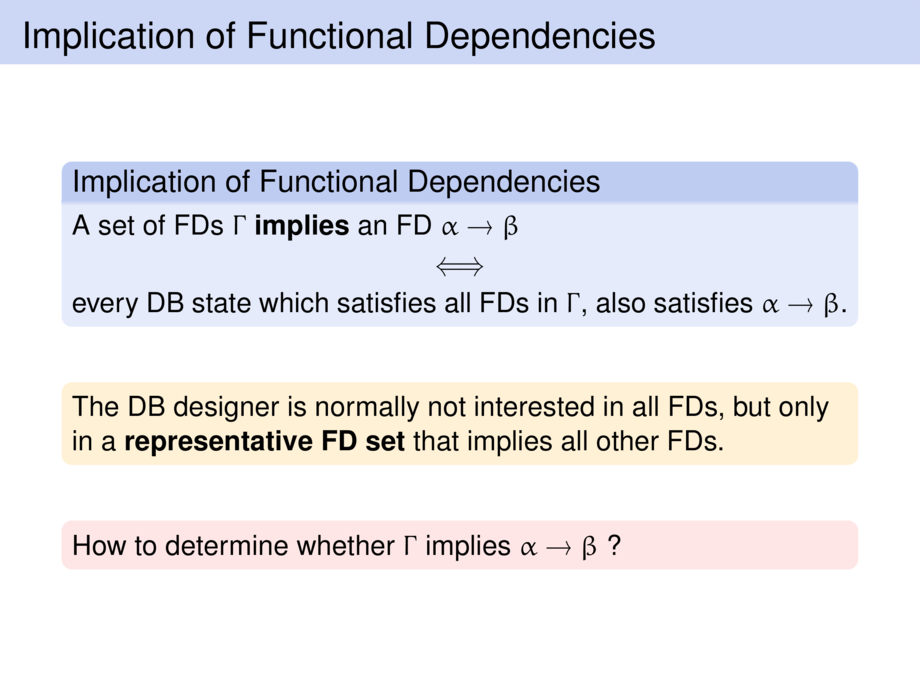
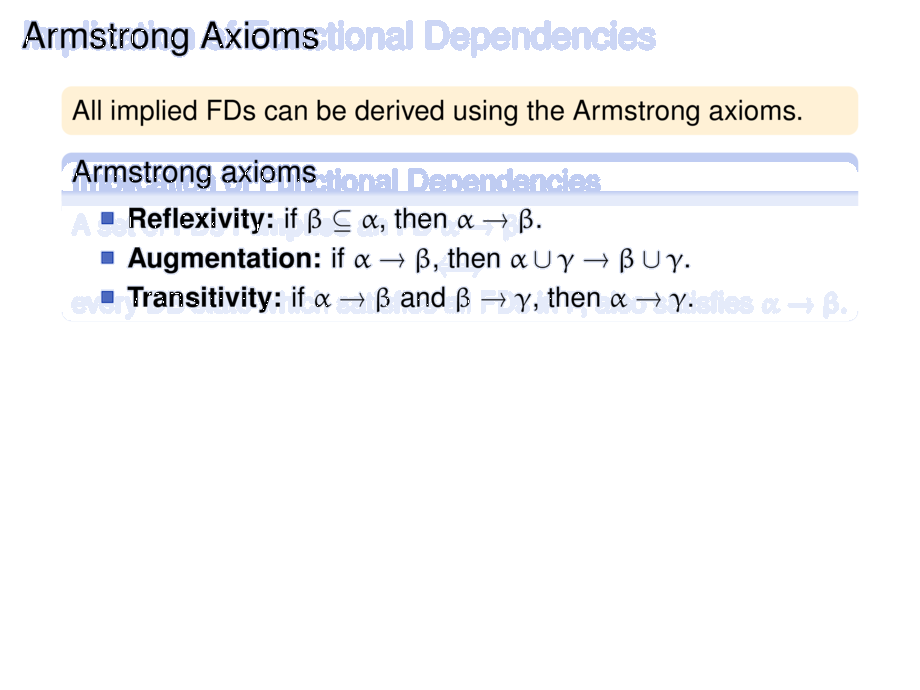
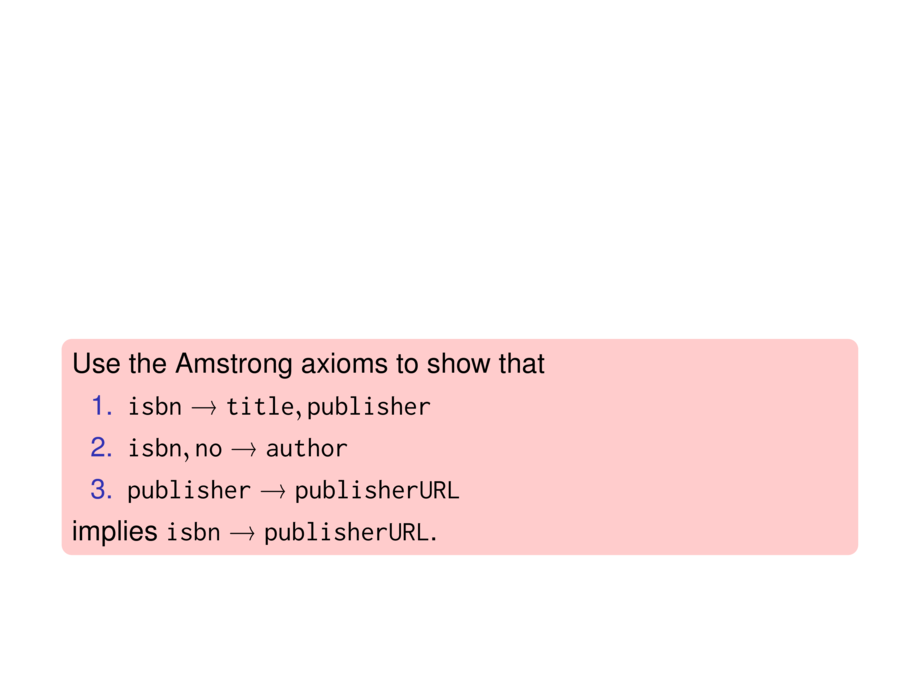
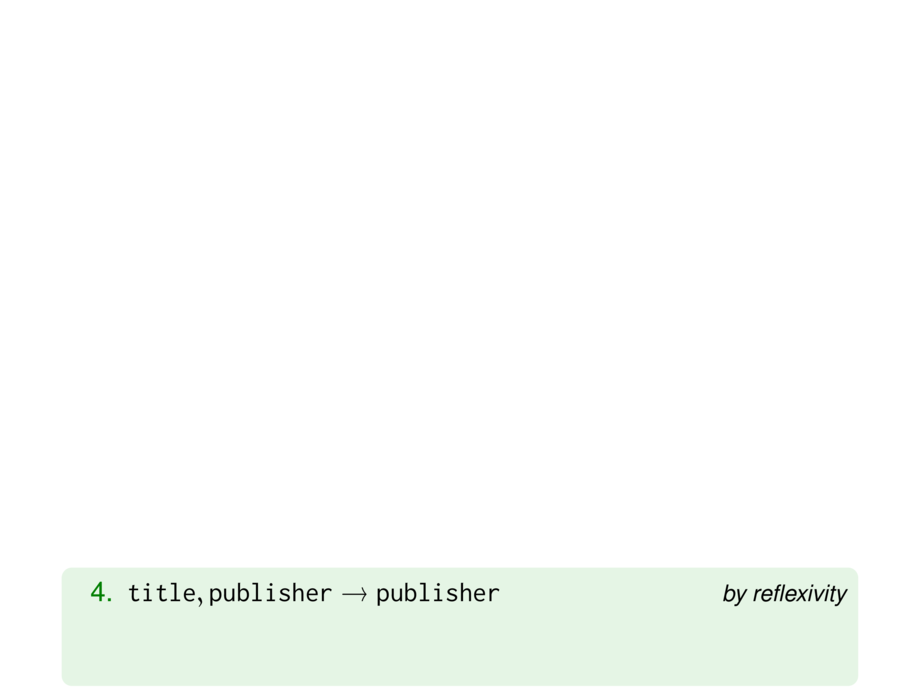
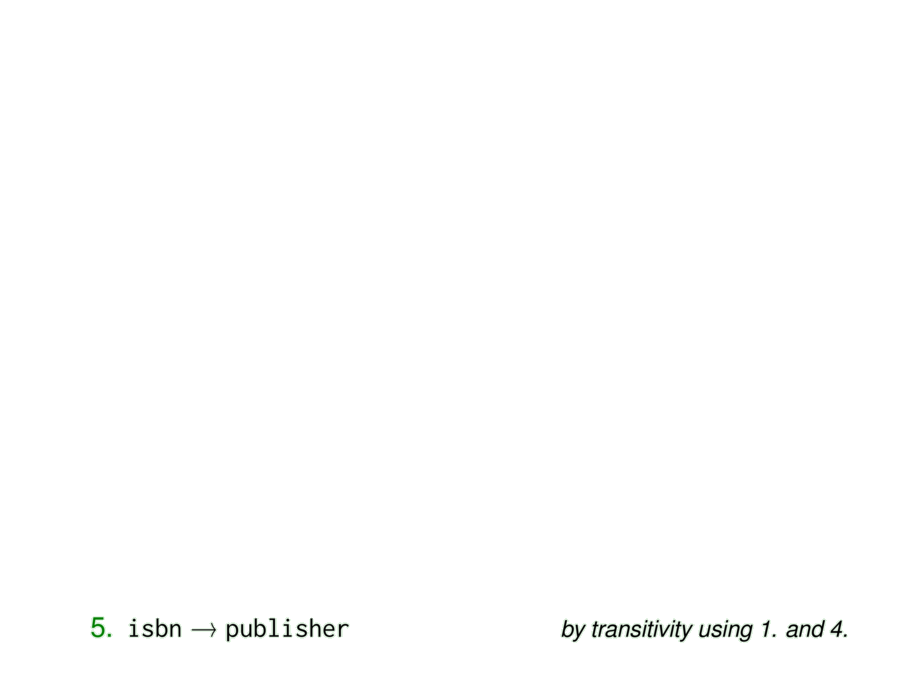































































































63/291
\begin{frame}
\frametitle{Armstrong Axioms}
\begin{goal}{}
All implied FDs can be derived using the Armstrong axioms.
\end{goal}
\begin{block}{Armstrong axioms}
\begin{itemize}
\item \emph{Reflexivity:}
if $\beta \subseteq \alpha$, then $\alpha \to \beta$.
\item \emph{Augmentation:}
if $\alpha \to \beta$, then $\alpha \cup \gamma \to \beta \cup \gamma$.
\item \emph{Transitivity:}
if $\alpha \to \beta$ and $\beta \to \gamma$, then $\alpha \to \gamma$.
\end{itemize}
\end{block}
\pause\medskip
\begin{quiz}{\textwidth}{}
Use the Amstrong axioms to show that
\begin{enumerate}
\item $\sql{isbn} \to \sql{title}, \sql{publisher}$
\item $\sql{isbn}, \sql{no} \to \sql{author}$
\item $\sql{publisher} \to \sql{publisherURL}$
\end{enumerate}
implies $\sql{isbn} \to \sql{publisherURL}$.
\end{quiz}
\pause
\begin{exampleblock}{}
\begin{enumerate}
\item [4.] $\sql{title}, \sql{publisher} \to\sql{publisher}$ \hfill\iremark{by reflexivity}
\pause
\item [5.] $\sql{isbn} \to\sql{publisher}$ \hfill\iremark{by transitivity using 1. and 4.}
\pause
\item [6.] $\sql{isbn} \to\sql{publisherURL}$ \hfill\iremark{by transitivity using 5. and 3.}
\end{enumerate}
\end{exampleblock}
\end{frame}

